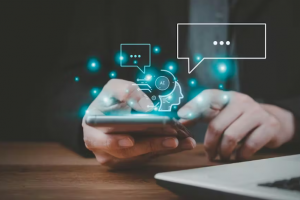With 20 percent of Americans owing at least one wearable device, the future of health gadgets seems pretty certain. However, it is the question of healthcare insurance costs that remains unclear. Will wireless medical devices and cloud solutions change the landscape of the industry, improving the quality of life for patients with diabetes, asthma and heart diseases, or will the trend die out eventually?
4 Ways Technology Improves Healthcare
American government plans to spend approximately $29 billion on healthcare devices’ promotion, while venture capitalists have already invested $1 billion in IT medical projects. And here’s why:
- Better doctor-to-patient and doctor-to-doctor communication. The fact that 60 million of US citizens do not speak English fluently perfectly justifies the growing demand for translation apps like AppTeck’s Omnifluent. Using the program, physicians can instantly translate diagnoses and prescriptions into a patient’s native language. Having launched the Doximity website, American doctors explore the power of social networks to establish effective cooperation on difficult cases and get permanent access to medical periodicals. Smart gadgets are also employed to conduct online consultations;
- Patient education. The main goal of patient education is to relieve doctors from the enormous pressure of making treatment decisions solely; with multiple technology tools like mobile applications, wearable devices and highly informative healthcare websites, patients are empowered to take responsibility for their health and consult another specialist if needed;
- Promotion of healthy lifestyle. Companies like FitBit, CliniCloud, and Misfit partner with medical institutions to create smart gadgets that track daily sleep, food consumption and physical activity. Following wearable tech trends, IT vendors craft truly customized, game-like solutions to sustain motivation and make healthcare fun;
- Precise diagnoses and proper treatment. In case you’ve never heard of Watson(not Sherlock Holmes’ friend, but the IBM supercomputer), here’s a curious articlefor you. Healthcare software, computers and wearable gadgets help physicians make clear diagnoses, provide adequate treatment, track patient’s history and access data on latest scientific research.
Healthcare Technology Trends
- Cloud-based services and digitalization of patient records. Although US medical institutions need to overcome certain obstacles prior to electronic healthcare records (EHR) full adoption, cloud solutions like Blue Button allow physicians from all over the world to promptly access healthcare information and take necessary measures;
- The rise of personal devices. By 2019, wearable gadgets are expected to sell 1million units per year. The increasing popularity of wearables is easy to explain. On the one hand, the devices are usually integrated with smartphones and support third-party applications. On the other hand, wearables are equipped with sensors that track any type of personal data, including glucose level, heartbeat and exercise intensity. A few notable IT healthcare solutions have already hit the market. My top-3 is: Insulin Angel (a digital device that helps patients keep Insulin at a safe temperature), ADAMM (asthma management kit, a smart device which detects early symptoms of an asthma attack) and Google Glass (the infamous smart computer is already employed to record surgeries and share the videos with physicians from other hospitals and countries);
- New tools for data analysis. The biggest problems in US healthcare are the lack of cooperation and electronic records, as well as high research costs. Technology introduces a totally new approach towards data analysis. With every patient file stored in the cloud, doctors and pharmacists will be able to track medication response and predict the chances of hospitalization.
Smart Devices and Healthcare Insurance
Since American health insurance companies are likely to increase rates up to 40 percent, average citizens and employers seek new options to reduce monthly payments. Parmy Olson of Forbes suggested that wearable devices can impact insurance costs, and the theory seems quite realistic.
In order to launch corporate wellness programs, US enterprises partner with FitBit and other smart gadgets manufacturers. The data generated by physical activity trackers can be analyzed by insurers: after all, most chronic diseases and accidents are behavior-driven. And while platforms and solutions for data analysis are still being developed (it’s Apple and Google who take the lead, so it won’t take long anyway), the wearable trend is alive and breathing.




























